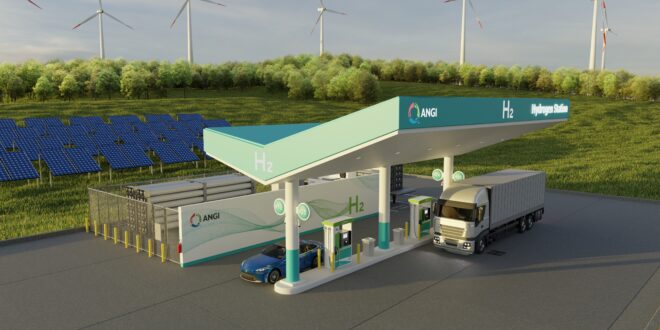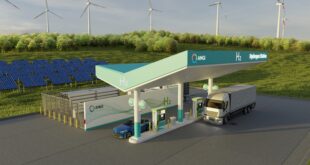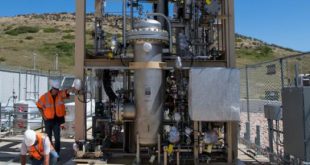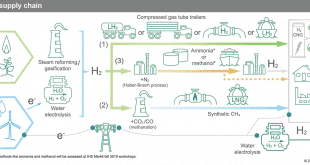Current methods used to process hydrogen into a usable fuel are cost-prohibitive, but several new innovations are promising to open the door to cost-competitive green hydrogen.
Hydrogen is well positioned to be the fuel of the future. However, a commercially viable transition to green hydrogen – the environmentally friendly version of the fuel – seems perpetually 10-15 years away. While current processing techniques like electrolysis continue to improve, they still are not able to unlock the potential of green hydrogen for one simple reason: cost.
Hydrogen, the most abundant element in the universe, is an incredibly efficient form of energy that produces zero emissions when burned. Yet, corporations, investors, and even many governments are hesitant to heavily fund technologies that are not cost-competitive with existing alternatives. Fortunately, two notable advancements in green hydrogen processing are promising to close the cost gap.
These innovations differ from the two most common forms of generating hydrogen today by employing one of the most abundant minerals in the Earth’s crust to unlock low-cost green hydrogen. The developments, which utilize aluminum and water to produce hydrogen, could enable large-scale operations like power generation plants, along with numerous other applications. As a more near-term solution, cheap, green hydrogen could be used to co-fire current coal and natural gas facilities to increase efficiency and reduce pollution.
Something’s got to give
While there are some common drawbacks with hydrogen – including storage, transportation, and safety – none are viewed as obstacles large enough to deflate hydrogen’s potential as an ideal fuel of the future.
The problem continues to be with the limitations of current production techniques. While hydrogen is abundant, it is almost always found within compounds, like water (H2O) or methane (CH4). Separating hydrogen from methane using steam-methane reforming (SMR), also referred to as blue hydrogen, is by far the most common commercial option and, up until now, the most cost effective.
However, a byproduct of the SMR includes carbon dioxide (CO2) which contributes to climate change and can have negative environmental and health impacts. As a result, SMR increasingly requires carbon capture and storage, which increases both the cost and complexity of the production process, ultimately inflating the final price of the fuel.
Electrolysis – the process of running an electric current through clean, distilled water to separate the hydrogen from oxygen – does not produce any byproducts other than hydrogen and oxygen. However, it currently requires an excessive amount of electricity. In fact, according to some studies the process requires about 54 kilowatt hours of electricity (input) to produce just one kilogram of hydrogen – which results in 33 kilowatt hours of electricity (output). With almost a 40% loss in usable energy, transitioning to this form of green hydrogen will require significant improvements in the process.
Kicking the can down the road
In an effort to move hydrogen forward, MIT recently innovated a clever solution to produce hydrogen with a recipe that essentially consisted of soda cans, seawater, and caffeine.
Documented in a paper published in the journal Cell Reports Physical Science, researchers dropped aluminum pellets, which had been pretreated with a rare-metal alloy, into filtered seawater. The process released hydrogen but at a very slow pace. By adding caffeine, the team was able to significantly speed up the process.
“This is very interesting for maritime applications like boats or underwater vehicles because you wouldn’t have to carry around seawater — it’s readily available,” said Aly Kombargi, a PhD student in MIT’s Department of Mechanical Engineering and the lead author of the study, in a recent interview.
The team from MIT is working to develop a small reactor that could operate on a marine vessel. This would also alleviate many of the issues with storing and transporting hydrogen.
“We don’t have to carry a tank of hydrogen,” adds Kombargi. “Instead, we would transport aluminum as the ‘fuel,’ and just add water to produce the hydrogen that we need.”
While the advancement is noteworthy, a major drawback is the utilization of a rare and expensive metal alloy made from gallium and indium.
Bundle of energy
MIT is not the only one innovating with aluminum. David Sattler, who has more than 30 years of experience working in thermodynamics and heat transfer, and his colleague Robert Fullop have been looking to capture the power of low-cost green hydrogen. Recently, the pair were able to demonstrate a new process that utilizes only aluminum, water, and a reusable catalyst.
When mixed using pure aluminum, the three ingredients immediately start a chemical reaction that produces four commercially desirable byproducts: 99.9% pure hydrogen, oxygen, heavy water – which can be used for fertilizer production, and alumina. The catalyst is proprietary but is not consumed in the process.
“Using aluminum to create hydrogen actually dates back to at least World War II when it was produced on the battlefields and used as a weapon,” explains Sattler, who also founded Marstecs – a space technology company focused on solving energy challenges to advance space tourism, interplanetary travel, and sustaining life on other celestial bodies. “The key was to find a way to make it stable and safe, which we have done.”
The company’s thermochemical green hydrogen process can also produce fuel when using recycled aluminum. The result is an output of 60% hydrogen. Both the clean and recycled processes require no electricity and can utilize purified water as well as water sourced directly from oceans, rivers, lakes or grey wastewater to produce hydrogen.
“We are able to produce a kilogram of hydrogen right now for about $7,” adds Sattler. “That puts it on par with other types of fuel currently on the market today.”
Energizing earth and beyond
If the cost of green hydrogen can be significantly reined in, its impacts could be felt immediately. This could include co-fired coal power generation plants as well as within today’s internal combustion engines (ICE). Like using ethanol as an additive, low-cost green hydrogen can be added to ICE models to boost efficiency and reduce emissions. This would enable a smooth transition to full hydrogen production.
Green hydrogen is not only an ideal option for Earth, but it also has the potential to be the future fuel on Mars. A recent peer-reviewed study published in the Proceedings of the National Academy of Sciences U.C. San Diego’s Scripps Institution of Oceanography presented evidence of an ocean of water residing somewhere below the surface. If the findings which are based on data from NASA’s InSight mission hold true it would open the door for the possibility of green hydrogen to power human habitation on the Red Planet.
With the Infrastructure Act of 2021, the U.S. Congress appropriated $8 billion to support hydrogen projects, signaling a commitment to a hydrogen-powered future and its intention to lead the world in the transition. The challenge now is to improve hydrogen processing techniques to drive down costs.
 Alternative Energy HQ solar power for homes, wind energy, and bio fuel issues
Alternative Energy HQ solar power for homes, wind energy, and bio fuel issues







